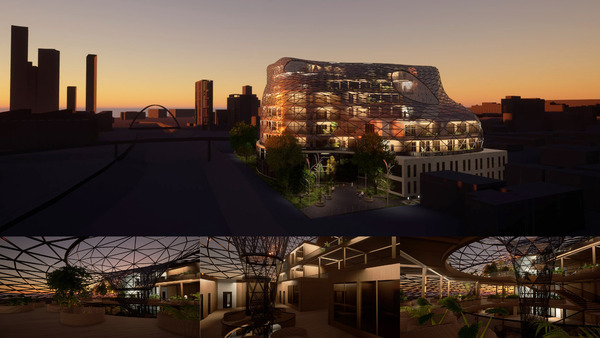TranSpires
CPU[ai] Atelier embarked on a visionary year focused on architectural intelligence, centred around the themes of "Net Zero Carbon Futures" and "Emergent Biophilic Design." The TranSpires project was initiated with the goal of addressing the spatial challenges faced by Manchester Metropolitan University's Health and Education department. It aimed to create an innovative, sustainable, and captivating building to accommodate the Health department's anticipated rapid growth.
The proposed building encompasses a diverse range of facilities, including professional teaching spaces, practical demonstration rooms, immersive virtual reality environments, cutting-edge research laboratories, and a community clinic. While the design thoughtfully caters to academic requirements, it also places significant emphasis on nurturing mental well-being by integrating open, organic indoor gardens and inviting enclosed balcony spaces for relaxation and leisure.
Notably, the spatial arrangement of the teaching areas, research labs, practical rooms, and the clinic is carefully planned to revolve around the central atrium and rainwater harvesting funnels. These funnels serve as vertical connections, diffusing natural light throughout the building and visually unifying the various spaces.
The primary structural elements of the building feature a robust combination of materials. The ground floor is constructed using reinforced concrete, while glulam columns and beams, in conjunction with cross-laminated timber (CLT) slabs, comprise the upper floors. These mass timber components are enveloped by an aesthetically striking, triangulated ETFE facade, supported by a steel frame. This facade not only provides transparency, allowing natural light to permeate the interior but also creates a dynamic atmosphere that nurtures the growth of indoor plants.
With a keen eye on sustainability, the building harnesses generated energy and harvested water for internal consumption, while any surplus resources can be effectively distributed across the campus. This aligns seamlessly with the university's long-term commitment to sustainability, ensuring that the project embodies its progressive vision for a greener future.


